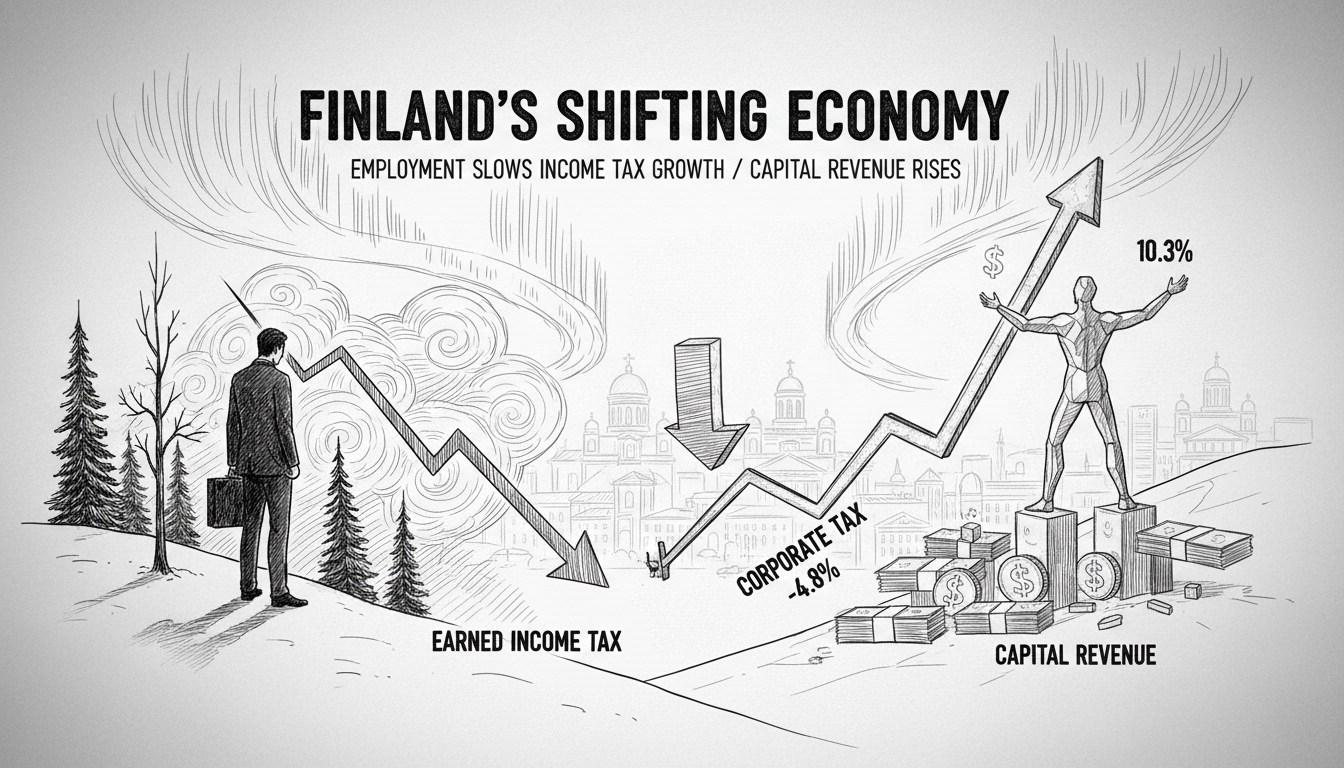Finland collected 45.1 billion euros in total tax revenue last year according to the latest tax administration data. The tax pot consists of personal income taxes and corporate taxes. Income taxes grew by 1.3 billion euros, representing a 2.9 percent increase compared to the previous year. However, the growth in earned income taxes slowed significantly when examined against the year before last. Tax officials attribute this slowdown to weakened employment conditions affecting wage earners across the country.
Capital income taxes reached 3.6 billion euros total, showing a substantial 10.3 percent increase compared to the previous year. This divergence between earned income and capital income trends reveals important economic patterns. The capital gains tax pot can fluctuate considerably year to year, with large annual changes in realized gains being quite typical according to tax authorities.
Tax refunds reached nearly three billion euros for individual taxpayers last year, while residual taxes or additional tax assessments totaled approximately 1.2 billion euros. The amount of residual taxes grew notably compared to the previous year. Tax officials explain that residual taxes often become payable when individuals have capital income, and the rise in capital income last year partly explains the increase in these additional tax assessments.
The city of Kauniainen in Uusimaa region saw the highest average tax refunds at over 1,500 euros per taxpayer. This affluent municipality's refund patterns reflect its residents' income structures and tax planning strategies.
Corporate tax payments totaled seven billion euros last year, representing a 4.8 percent decrease from the previous year. This decline indicates that corporate profitability was somewhat weaker than in the preceding period. Just under one quarter of corporate tax revenue is distributed to municipalities, while the remainder goes to the state. The municipal portion is allocated primarily based on where companies maintain their operations and workforce.
Examined by municipality, Helsinki collected the largest corporate tax share at 415 million euros. The capital city's dominant position reflects its concentration of corporate headquarters and major business operations. Changes in corporate tax revenue affect municipal tax incomes with a time lag, creating budgeting challenges for local governments.
This tax data reveals Finland's evolving economic landscape where capital income grows while employment conditions constrain wage growth. The divergence between corporate tax declines and capital income tax increases suggests profits may be flowing to investors rather than being reinvested in business operations. For international observers, these patterns highlight how Nordic welfare states balance taxation across different income sources while maintaining social services.
Tax authorities will publish detailed 2024 personal and corporate tax data on Wednesday, providing further insights into Finland's economic direction. The complete dataset will show how taxation patterns vary across regions and income groups, informing policy decisions about Finland's tax structure and economic competitiveness.

